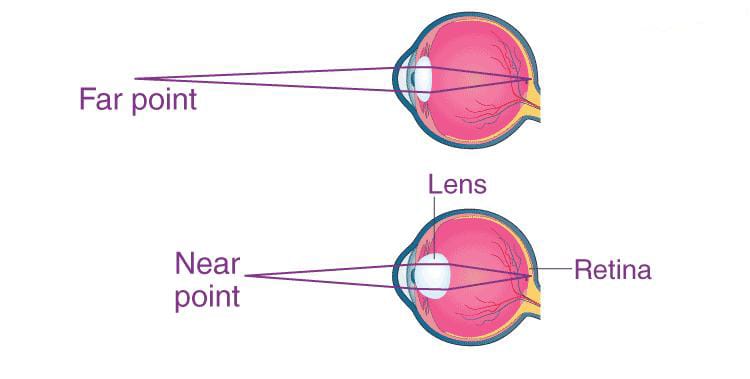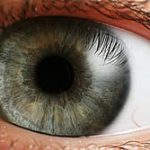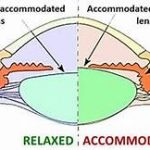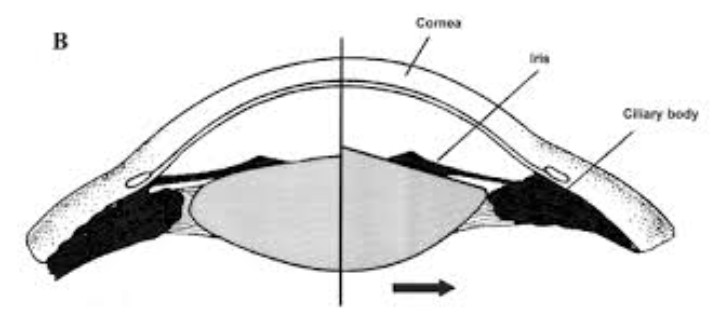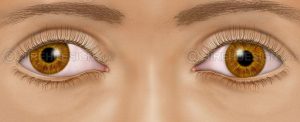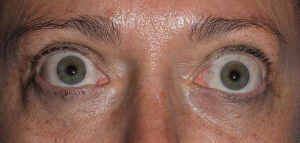Physiological accommodation: The accommodation reflex is the visual response for focusing on near objects. It also has the name of accommodation -convergence reflex or the near reflex.
It is a synkinesis which consists of convergence of both eyes,contraction of the ciliary muscles resulting in a change of lens shape (accommodation) and pupillary constriction.
PHYSIOLOGIC PROCESS AND PURPOSE OF ACCOMODATION:
Accomodation is the only physiologic ability to change the optical power of the eye to focus at a continuous range of distances,mimicking the autofocus of a camera.
ASPECTS OF ACCOMODATION:
There are 8 most important characteristics of accommodation-
- Accomodation is the end result of conflict.
- It may be conscious or an unconscious activity or process.
- It is a universal activity .
- It is continues process.
- It is a mixture of love and hate.
- It is a changing process.
- It is a selfish process.
- It is an associative social process.
COMPONENTS OF ACCOMODATION
The process of accommodation is assumed to involve four components;
a)Reflex
b) Vergence(Convergence)
c)Proximal
d)Tonic accommodation(also called resting state of accommodation )
CELLULAR:
On a cellular level, the accommodation reflex relies on neural signals.
To conduct both afferent and efferent pathways. Impulses are carried along the fibres of the optic nerve, through projection of the cortex, and ultimately to the oculomotor and Edinger Westphal nuclei. Moreover the retinal neurons involve in the transmission of vision rely on phototransduction ,which has a complex
cellular mechanism.
Current understanding of the accommodation has its basis in the capsular theory Of accommodation or Helmholtz hypothesis.
With accommodative effort, there is the contraction of ciliary muscles, releasing the tension of zonule , that “flatten” the lens, increasing the centra thickness and optical power ,aiding in near vision.
Schachar proposes that the mechanism of change in lens shape is by the equatorial zonules, whereas the anterior and posterior zonules function as passive components in determining the optical power of the lens.
DEVELOPMENT:
As with any other component of the eye ,the important contributions of the neural crest homeobox genes,and the growth factor are the key to development of the accommodation reflex.
While neuroectoderm contributes to the retina and optic nerve required for accommodation, it is neural crest cells that compose connective tissue of the orbit and the ciliary ganglion. The lens itself is a derivative of surface ectoderm. Unlike the structures mentioned above , the extraocular muscles are derivatives of mesodermal tissue.
FUNCTION:
The function of the accommodation reflex is to coordinate visual attention to near objects. Proper convergence prevents diplopia. Constriction of the pupil increases the depth of the field.
MECHANISM:
Light from the environment is brought to focus on the retina by the combined optical power of the cornea and the lens.
The mechanism of accommodation reflex involves three responses:
- The convergence of both eyes is such that the near object is in focus, which aids in image projection on the fovea. This action involves contaction of medial rectus muscles of both eyes, with the relaxation of lateral recti resulting in the adduction of both the eyes.
- Constriction of the sphincter pupillae muscles, pupil constrict, which improves the depth of focus.
The divergent rays from distant objects scatter off the periphery of the cornea, and hence they do not fall on the fovea.
- Contraction of the bilateral ciliary muscles results in thickening of the lens , which shortens the focal length, which increases its refractive power( measured in diopters).
Accomodative convergence is the convergence induced by accommodation as part of the near reflex. For each diopter of accommodation, there is an increase in convergence, the measurement of which is in prism diopters .The normal value is 3 to 5 prism diopters.
Abnormalities of this ratio play an essential role in etiology of strabismus and binocular vision problems.
RELATED TESTING:
Examiner frequently check the accommodation reflex during the neurological exam by having the patient focus on a small target like the examiners fingertip or a pen.
The examiner asks the patient to focus on the target used for testing at a distance ,and then gradually bring the finger within a few centimeters between the patients eyes . Look for convergence of eyes and constriction of pupils.
CLINICAL SIGNIFICANCE:
Dysfunction of the accommodation reflex can be physiological like in aging and presbyopia , pathological or pharmacological.
Accomodation deficits can occur in neurological condition like supranuclear lesions,encephalitis, pineal tumours or in neuromuscular disorders like myasthenia gravis.
TYPES OF ACCOMODATION IN EYE:
It can be broadly classified into two, decreased accmodation and increased accommodation.
Decreased accommodation may occur due to physiological(presbyopia), pharmacological (cyclopegia) or pathological. Excessive accommodation and spasm of accommodation are types of increased accommodation.

